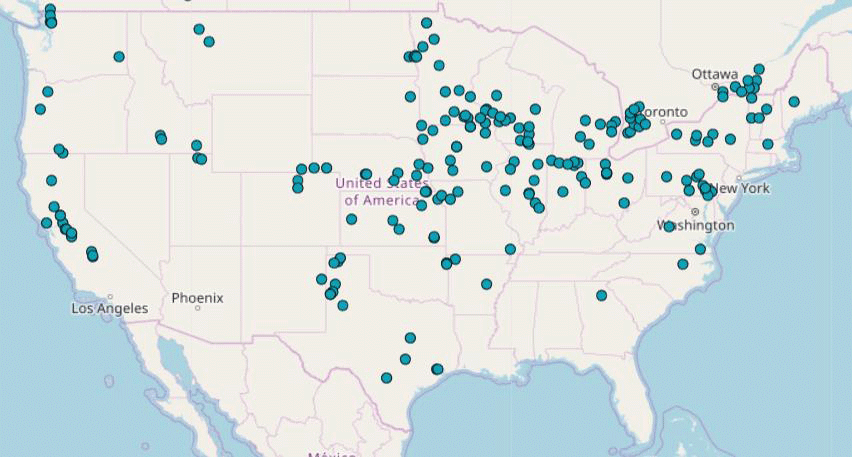By Kellee James and Rachel Storey, Mercaris
It is a well-known fact that there is an insufficient domestic supply of organic grains, leading to increased dependency on imports. But what if American farmers were suddenly able to meet growing U.S. demand? Would current infrastructure be ready or able to accommodate increased supply? As a starting point, let’s look at organic feed-grade corn: Based on Mercaris research, there are fewer than 200 facilities that are certified organic and handle organic feed-grade corn. If domestic supply did in fact increase, the existing infrastructure would be overwhelmed and overall insufficient.
As the organic movement continues to grow, there is a need to expand existing facilities, invest in new facilities, or convert existing ones to become certified to store, clean, and process organic grain. After all, organic grain grown on the farm is only as valuable as the ability to process and move it through the market, so the need for certified organic facilities—as evidenced by a recent uptick in investor capital flowing into such facilities—is certainly on the rise.
The impacts of more robust organic processing capabilities nationwide would be many-fold:
- Farmers would gain new and expanded marketing options. Presently, there may only be a few facilities within a reasonable distance that are certified to store or handle organic grain. If a farmer lacks an on-farm storage option, this is especially difficult as it causes the farmer to sell for under-market prices or even sell the grain as conventional. With additional places to store and market grain, farmers would feel less pressure to sell at lower prices and would be able to take advantage of a more competitive buying landscape.
- Freight and logistics costs would decrease. If certified facilities were more common, we can presume that grain would have to travel shorter distances between farm and handler. While it is estimated that 80 percent of conventional grain travels 20 miles or less to its first point of handling, the organic supply chain paints a different picture—at least 80 percent travels farther than 20 miles. As the average number of miles between farm and handler declines, freight needs—and therefore costs—can be expected to decrease as well.
- Buyers would have improved options for sourcing grain. As it becomes simpler to identify options for sourcing, buyers’ ability to innovate and expand product offerings should also improve. Locating facilities that are more convenient to their own manufacturing, packaging, and distribution networks should become easier.
Overall, increased investment into organic grain handling facilities could pay off for not only investors, but for all stakeholders across the organic grain supply chain. The consumer will also benefit with reduced prices for organic products and increased confidence in the quality of domestic ingredients. This is of growing importance during a time of increased concerns about import integrity. Investment in supply chain infrastructure would enable our domestic supply to better compete with foreign imports and keep up with demand. As the supply chain continues to be made more efficient through both infrastructure and technology investments, costs across the entire supply chain will decrease.
We’ve been keeping an eye on these investments, and think you should too. If you’d like more information on the status of organic grain handling infrastructure, e-mail us at mercaris@mercaris.com or tweet us @Mercaris.









